To succeed in barrel racing, you and your horse both must be able to run patterns well in any-size pen, because every arena in which you compete will vary in size to a degree. Some venues have enormous arenas; others are small by comparison. But most fall somewhere in the middle. You must be able to quickly and easily make adjustments to your approaches, runs, and turns, and your horse must be keenly in tune with your cues to adapt to any split-second decisions.
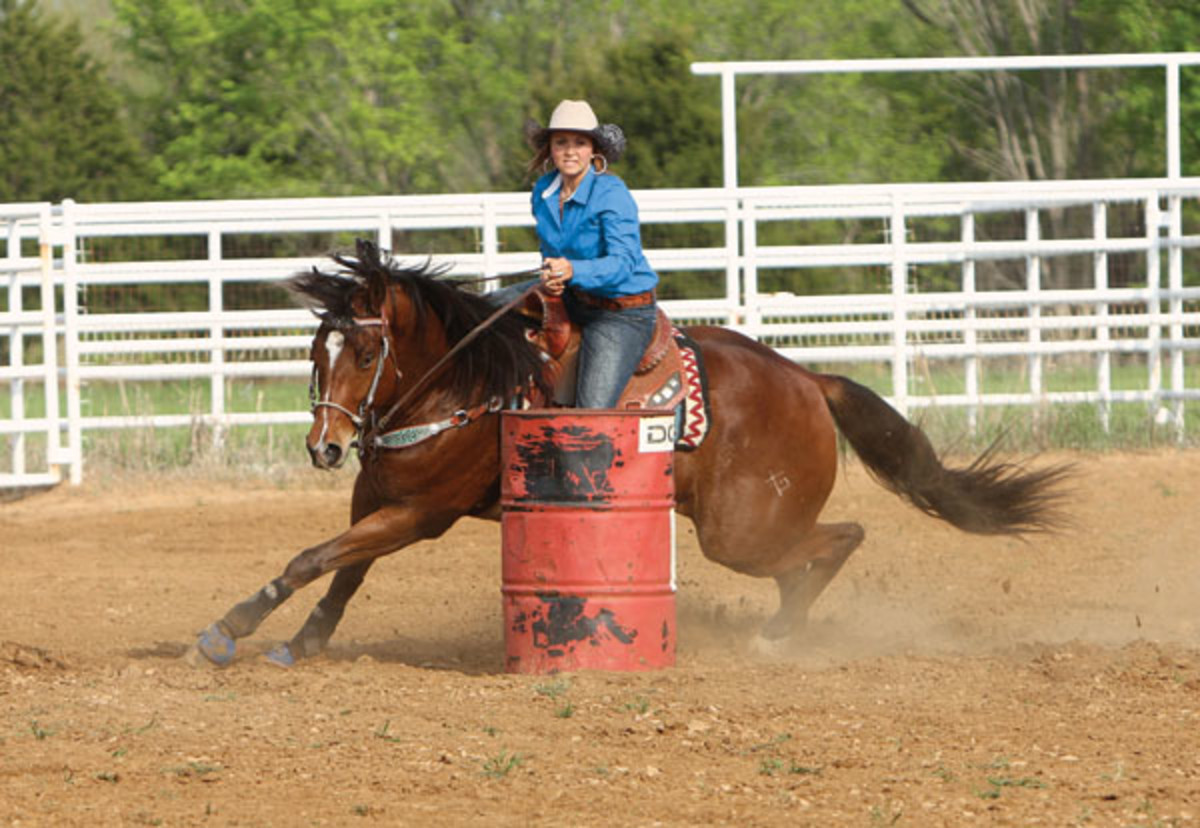
I’ll provide you with key tips, and I’ll also describe the most common errors riders make in large and small pens and how to fix them. Plus, I’ll give you practice exercises that’ll improve your horse’s performance in any-size arena.
Pen Size: Barrel Set-Up
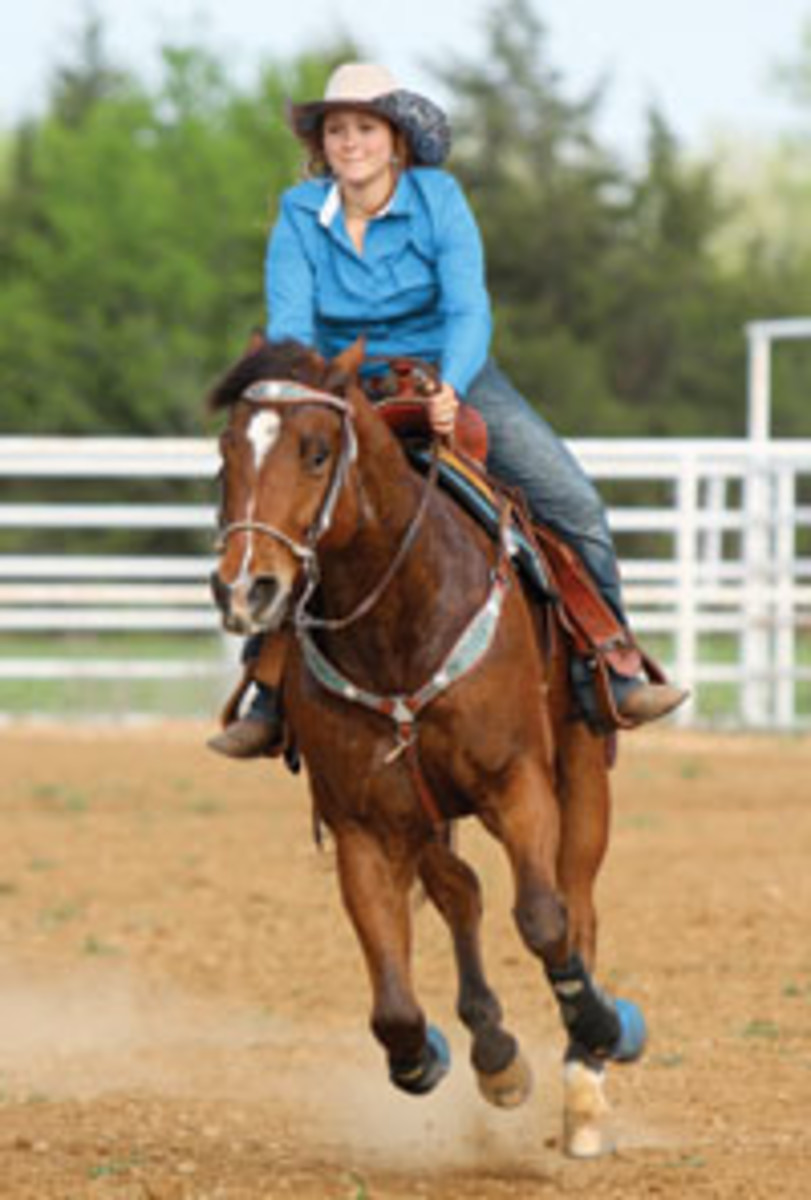
The event’s show committee sets the pattern, according to the level of horses and riders competing. This means you can’t assume that the barrel set-up will be the same from event to event, even if they happen to be held at the same venue. You and your horse must adapt to the pattern presented.
In a small pen, the first and second barrels will be set 10 to 12 feet off the pen’s fence, and depending on the arena’s size, the third barrel may also be close to the fence. In a small arena, the barrels also will be positioned closer together, providing you with less time to prepare for your turns.
In a large arena, the barrels are usually set about 20 feet from the arena’s fence; however, there are some occasions in which the show committee will place the barrels closer to the fence, creating a huge span of run space between barrels.
Mastering the Large Pen
If you’re accustomed to training in a small pen, you’ll face several new challenges in a large arena. One of the most common errors riders make in a large pen is being too aggressive in their approaches and turns. The barrels are spaced farther apart, causing riders to feel the need to achieve top speed as quickly as possible between each barrel. But if you gain too much speed and don’t adequately shorten your horse’s stride to balance him and gain control before a turn, your horse will run too far past the barrel and add time to your run.
You can prevent this mistake easily by controling your horse’s speed and asking him to shorten his stride in advance of your turn. (You’ll actually sacrifice less time by shortening your horse’s stride for a precise turn than by overshooting the barrel.) Soften your mid-section, relax your hips down into the saddle, and apply pressure with your inner thighs to stabilize your upper body. If your horse requires a stronger slow-down message, apply gentle rein pressure with soft hands—don’t jerk your reins. Maintain a slight degree of pressure with your legs, so your horse doesn’t misunderstand your cue and think you want him to return to a jog or a walk.
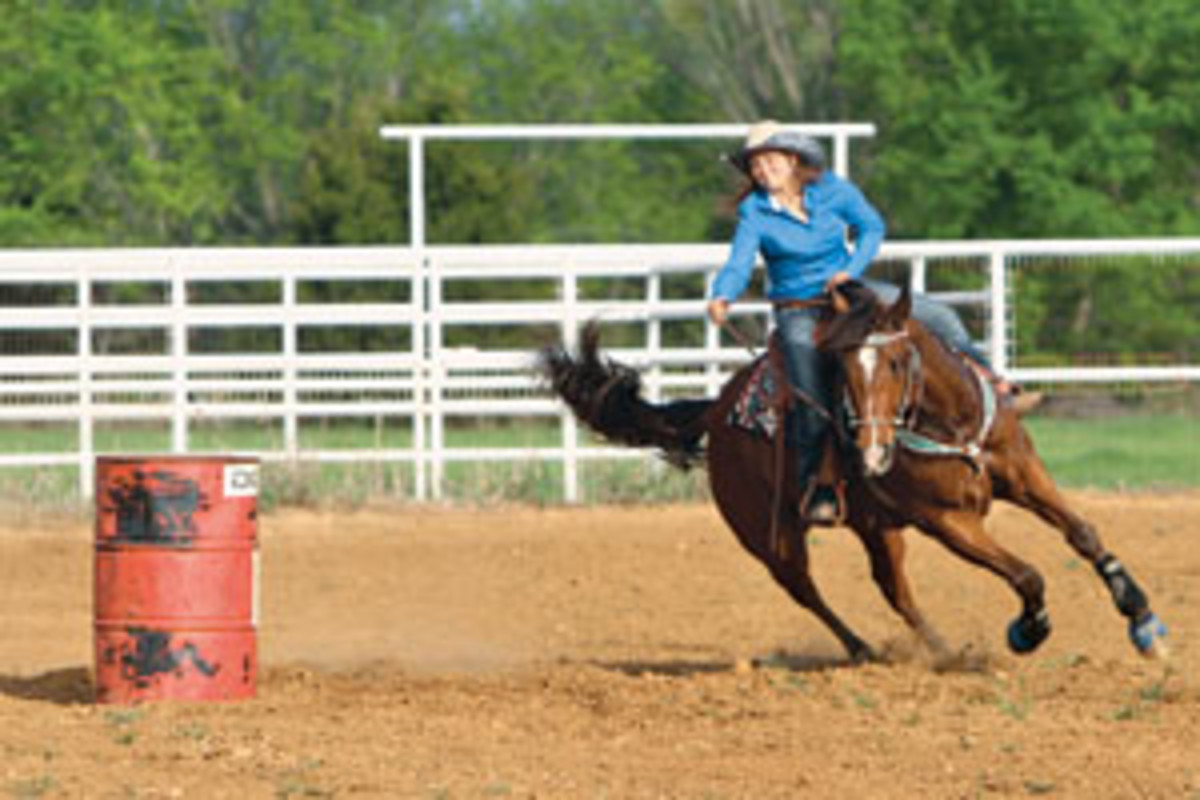
To shorten your horse’s stride effectively, you must find the ideal balance between your leg pressure and your slow-down cues, without breaking gait. Practice shortening and lengthening your horse’s stride at home on straight lines, diagonals, large and small circles, and then around barrels. This will help you determine the exact amount of pressure your horse requires. (Note: If you have a stronger, harder-running horse, you’ll need to shorten his stride slightly farther out from the barrel than you would with a horse that’s more sensitive and responsive to your slow-down cues.)
In large arenas, many riders make the mistake of running poor approaches to the barrels, either by coming in too close to the barrel or too far away. If you come in too close, you’ll risk knocking over the barrel, which will result in a 5-second penalty. Plus, you’ll make it much more difficult for your horse to execute a well-balanced turn because he’ll have too much weight on his front end, and thus be unable to use his hindquarters effectively. On the other hand, if you come in too far away and shoot past the barrel, you’ll lose a substantial amount of momentum—and time—while you reposition your horse to continue.
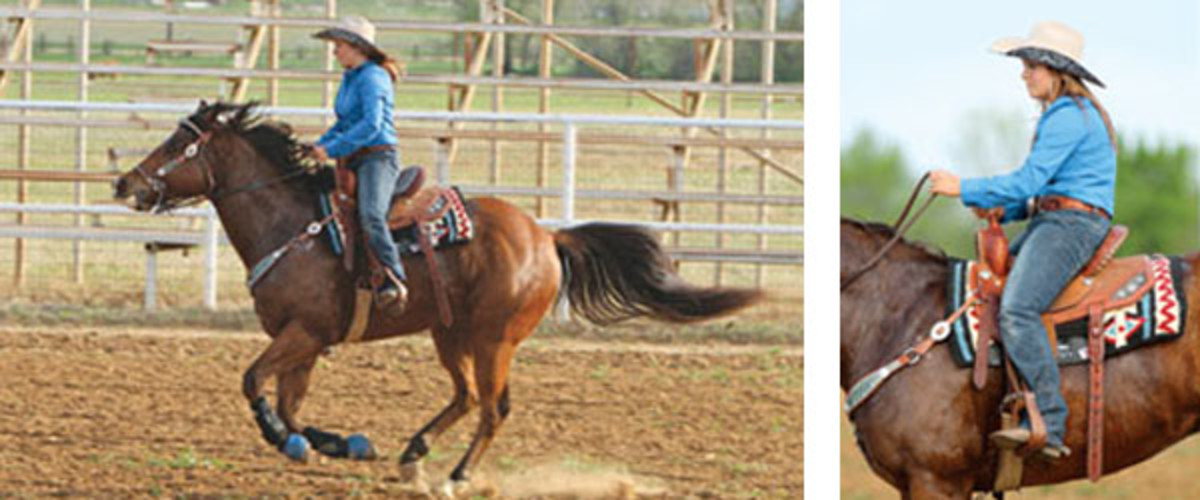
To avoid these errors, carefully plan each approach. Visualize exactly where you should position your horse to execute a speedy, yet balanced turn. Also, make sure you’re not hesitating or inadvertently “freezing up” on your approaches. Think about riding every stride of your approach perfectly so you’re able to set your horse up well for his turn.
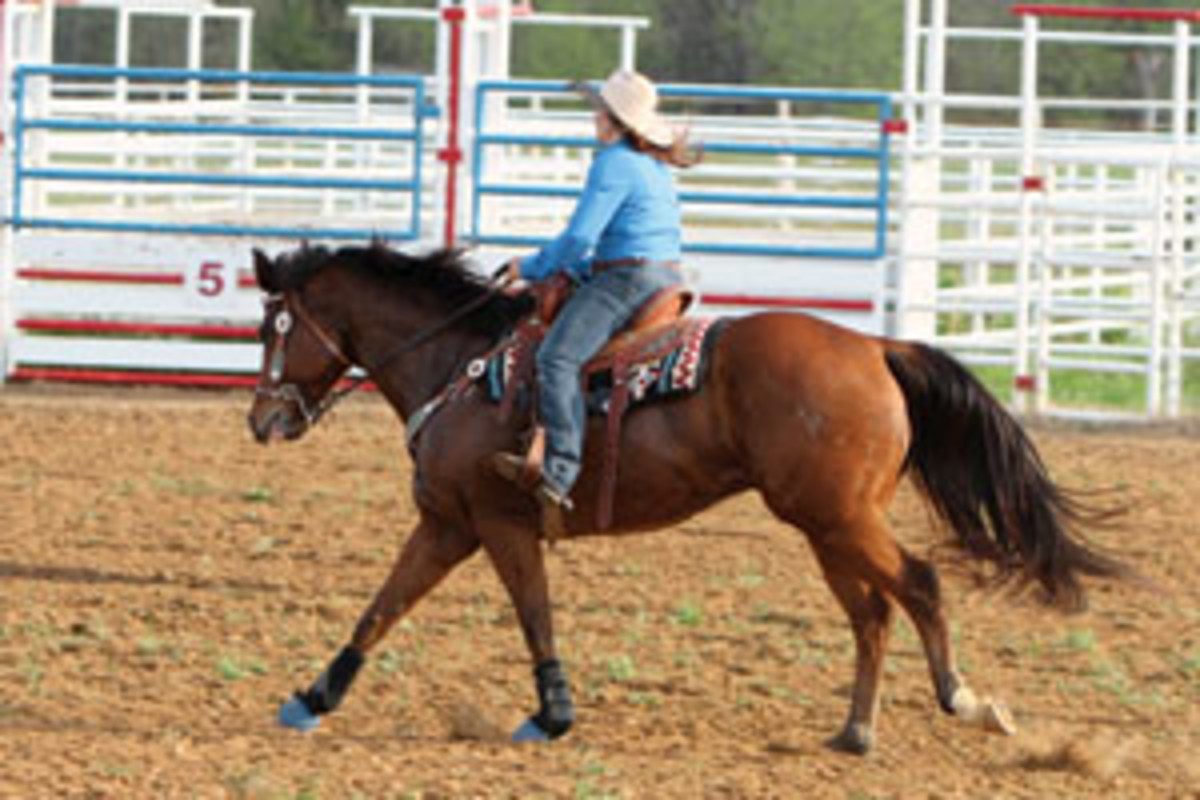
More Tips
If your horse runs better in a small pen…
• Seek out chances to run in a large pen to get your horse accustomed to the unfamiliar set-up.
• Make sure you can rate your horse effectively, so he shortens his stride the moment you ask. To achieve this, practice shortening and lengthening his stride on straight lines, across diagonals, and throughout large and small circles—not just on the barrel pattern itself.
• Prepare yourself mentally. An unfamiliar pen size or barrel set-up can create a mental barrier. Combat this with positive thinking, and by planning your run in advance. Confidence can take you a long way.
Dominating the Small Pen
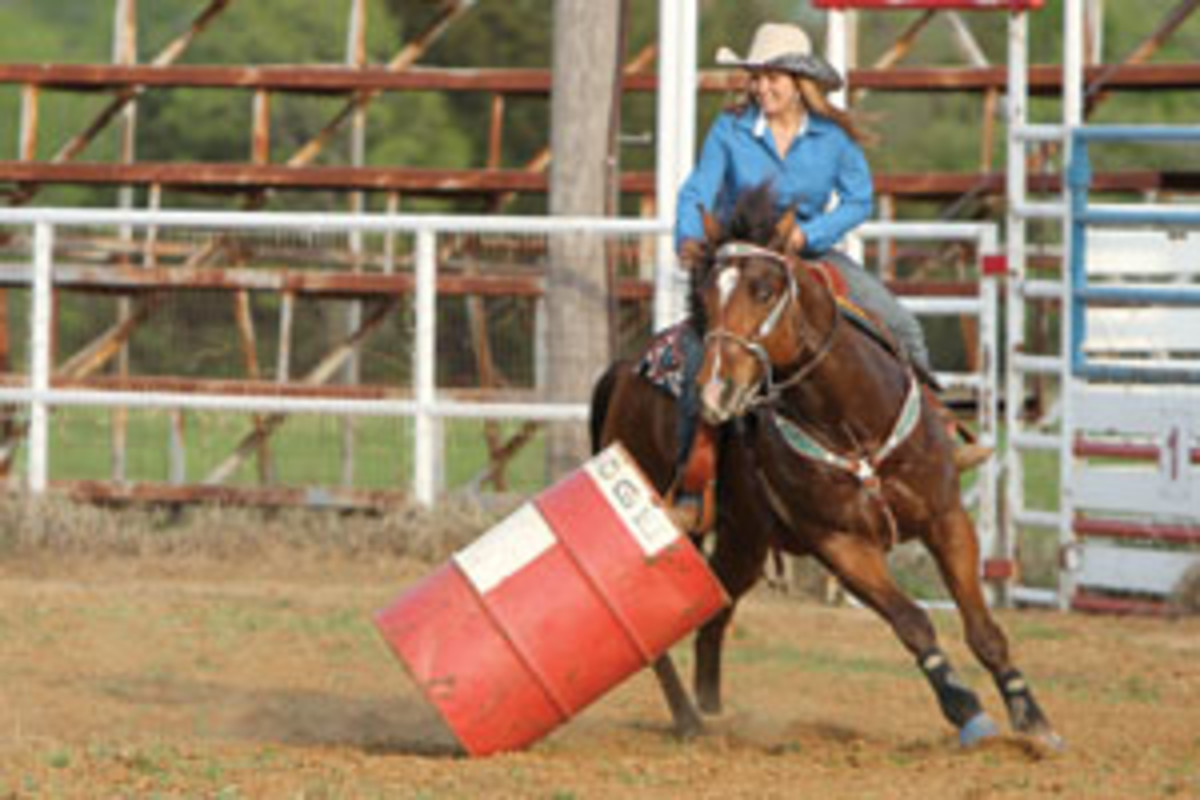
If you’re accustomed to running in a large arena, a smaller pen can be intimidating because the barrels are not only positioned closer to the arena’s sides, but they’re also spaced closer together. One of the most common problems riders have in small pens is over-anticipating their turns.
Because the barrels are closer together, riders have less time to think about their next turn after completing the one prior, and therefore they tend to ask their horses to turn too early—often when the horse’s nose or shoulder is parallel to the barrel.
If you get ahead of your horse and begin your turn too soon, I can almost guarantee you that your horse will knock over the barrel. Or, if your horse efficiently maneuvered himself to avoid hitting the barrel, he likely “stepped out” of the turn at the last minute. By this, I mean that your horse realized he was coming in too close to the barrel, and he loped a stride or two outside the turn’s perimeter.
To avoid these errors, determine your ideal turning position and implement a plan. During your approach, for example, assess exactly where you want to start your turn by looking straight ahead to judge your distance from the barrel. I see a lot of riders who “look too short,” meaning they focus on the front of the barrel, instead of looking for the turn. Avoid this by looking slightly past the barrel. Then, ride far enough up to the barrel so that either your leg or your horse’s hip is parallel to it; then, begin your turn. Starting your turn from this position will enable your horse to really get into the ground and bring his hind end up underneath himself—making for a speedy, tight turn.
Another problem I see in small arenas: Some horses, especially those inexperienced at running in small areas, become anxious or even outright panicked about turning so close to the arena’s side.
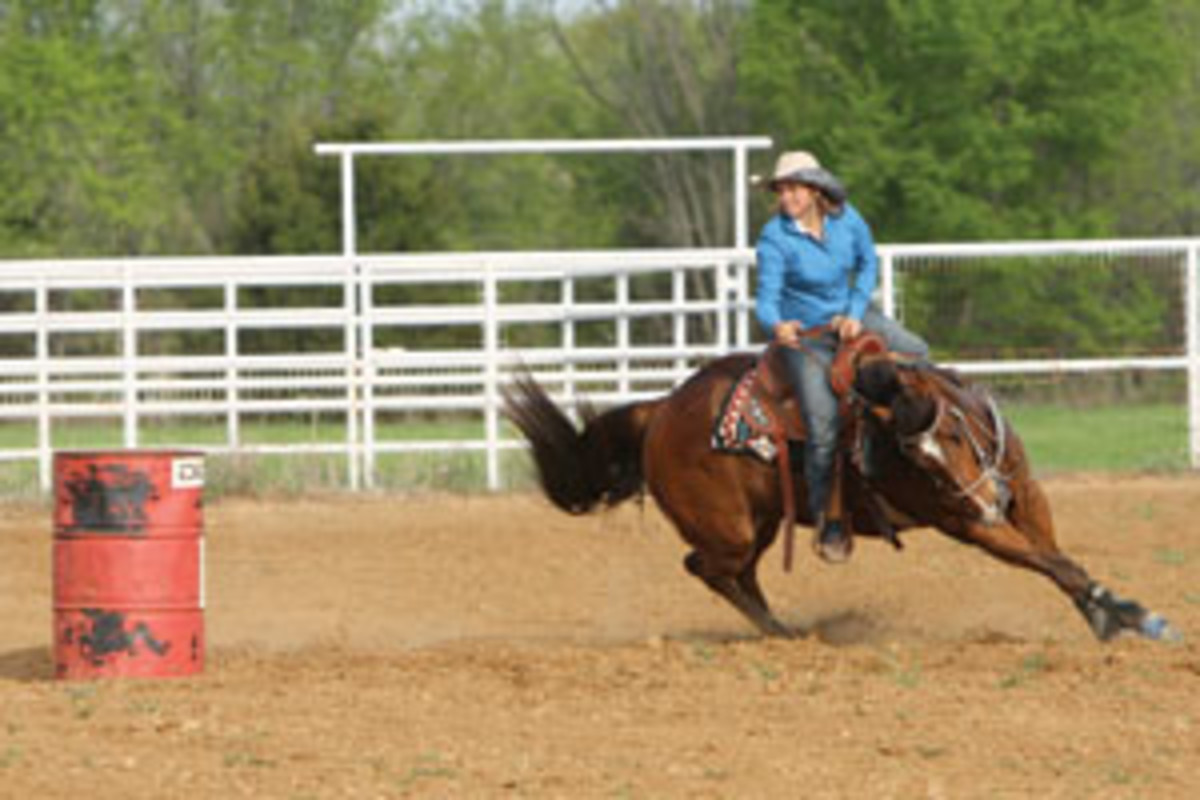
Help your horse adapt and become comfortable about turning near the fence through extensive practice and repetition at home. In your practice pen, set the barrels relatively close to the fence, but not as close as they would be in the show pen at 10 to 12 feet. A good starting point is about 15 feet.
After setting up the barrels, don’t overwhelm your horse by running the pattern at speed on your first try. Start by working around one of the barrels positioned close to the fence and focus on simply keeping your horse’s feet moving around that barrel. Circle the barrel several times at a walk. If your horse is nervous, he may jig around the barrel or break into a trot as you first begin to circle it. This is OK, as long as he’s moving forward and around the barrel. Relax and attempt to bring him back to a walk. Once he’s realized the fence isn’t out to get him, jog or trot around the barrel, and then lope.
Next, reverse directions and repeat the circles at the same gaits in the opposite direction. Then do these drills around the other two barrels, continuing to insist that your horse obey your cues to go forward or slow down.
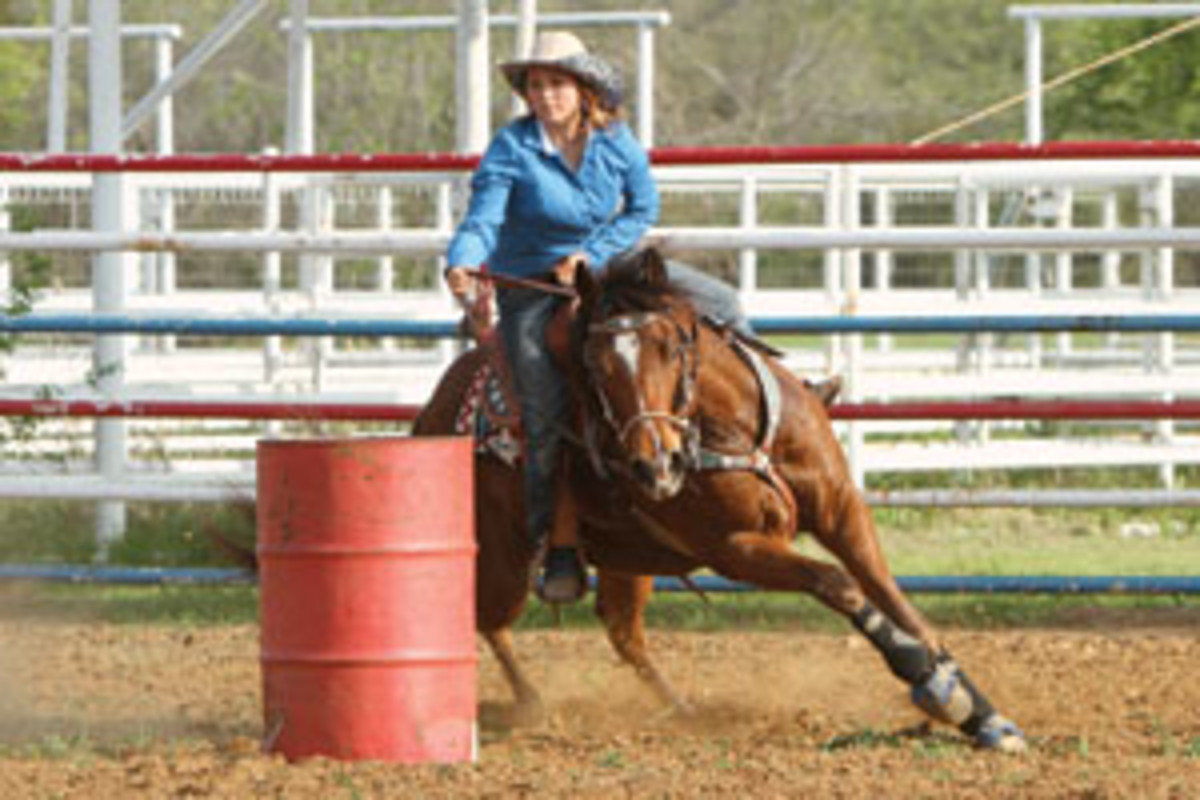
Next, move the barrels closer to the fence, as they would be in the show pen (at least 12 feet off the fence; 10 feet if you feel your horse is prepared for it), and repeat the circling exercises at the walk, jog, and lope around all three barrels. After you’ve consistently practiced these drills, your horse will be less concerned about running and turning next to the fence, and he’ll be more prepared for the small pen.
Running and turning so close to the pen’s fence can also cause riders to feel nervous or even claustrophobic. If you experience anxiety about the fence, repeat the drills I suggested to increase your confidence and help you acclimate to the fence’s proximity. Once you’ve alleviated your concerns and your horse is prepared, practice running all three barrels in the smaller pen at top speed. It may take several or many runs for both you and your horse to get the hang of it, but you will.
More Tips
If your horse runs better in a large pen…
• Drill the barrel-circling exercises on a regular basis to keep your horse acclimated to running and turning close to the fence.
• Practice lots of transitions. For example, lope half way around your practice pen, then ask your horse to transition to a trot; from there, ask him to go down to a slow jog. Then, maybe ask him to stop and back up several steps.
• Especially, practice transitions between a gallop and a lope to keep your horse honed for when you cue him to slow down for a turn. Drill all of your transitions on straight lines, diagonals, and large and small circles.
Final Thoughts

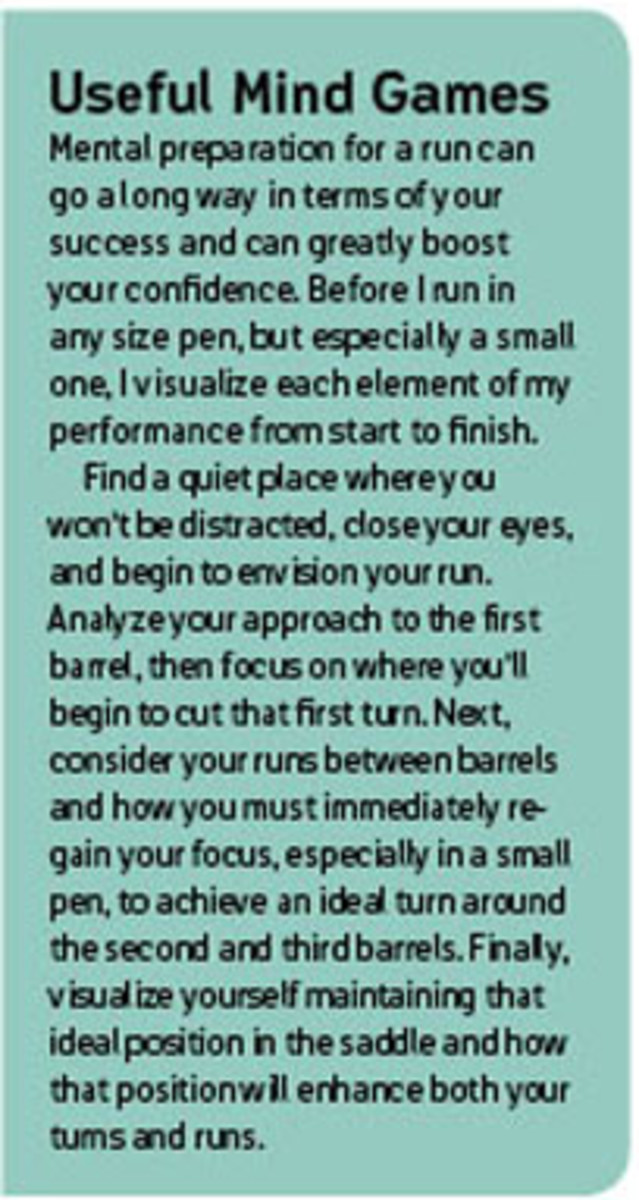
Don’t slack off between competitions. Your barrel horse is a tuned athlete that needs to be worked (to some degree) every day. Keep your horse supple by asking him to bend and flex in both directions. This will also help to stretch out any sore muscles. Practice rollbacks, spins, and perfectly round circles in which your horse is curving his body to match the shape of the circle.
As you perfect these circles, gradually use less and less rein to guide your horse—with your ultimate goal to be able to use your legs and body position to keep your horse rounded, without assistance from your reins. And you don’t have to always work the circles around barrels; get creative and make things interesting for your horse. Go on a trail ride, for instance, and work your circles around a tree or a rock. Continue to engage your horse’s mind by changing things up.
And finally, try not to fixate on pen size—especially the size that’s more difficult for you. Whether your horse happens to run better in a large arena or a small one, challenge yourself by competing in both. Not only will you and your horse become a more versatile team, you’ll also both gain confidence, new skills, and improve your overall performance.
While it’s important that you be able to run in any size pen, there’s no “best” or perfect-size pen for any given horse. If your horse has more experience running in a large pen, he’ll likely run better and turn harder in a large arena. The same concept of familiarity applies if your horse has more experience running in a small pen. But a good barrel horse should be able to run just as well in any size pen, as long as he’s well broke and responsive to his rider’s cues.
Michele McLeod moved from Temecula, California, to Whitesboro, Texas, in 2005 to train barrel horses full-time. She trains futurity colts and seasoned horses for rodeo. She qualified for her first NFR in 2013 and is now striving to make her second NFR with 6-year-old stallion Slick By Design, owned by Charlie Cole and Jason Martin. Michele owns and operates Michele McLeod Barrel Horses with her husband, John, and daughters Katelyn, Lindsey (shown in these instructional photos), and Jenna.






